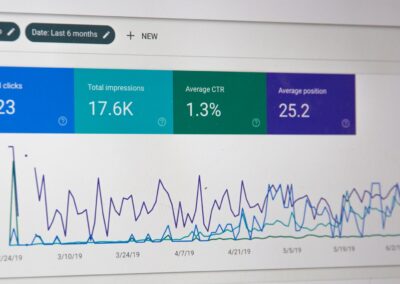Enhancing Prediction Accuracy Through Ensemble Methods in Time Series Forecasting
Techniques for Combining Multiple Time Series Models
When it comes to implementing ensemble methods in time series forecasting, several techniques can be employed to combine multiple models effectively. The choice of technique depends on the specific goals of the forecasting task and the characteristics of the data. Some of the most common techniques include bagging, boosting, and stacking. Bagging, or Bootstrap Aggregating, is a technique that involves training multiple versions of a model on different subsets of the data. Each model is trained independently, and their predictions are averaged to produce the final forecast. Bagging is particularly useful when dealing with high variance models, as it helps to reduce overfitting and improve the model’s generalization to new data.
Boosting, on the other hand, is a technique that focuses on sequentially building models, where each new model attempts to correct the errors made by the previous one. This iterative process continues until the model’s performance no longer improves. Boosting is known for its ability to enhance the predictive power of weak models, making it ideal for time series forecasting tasks that require a high degree of precision. In industries such as telecommunications or energy, where accurate demand forecasting is critical, boosting can provide the granularity needed to capture subtle trends and seasonal effects.
Stacking is another powerful ensemble technique that combines the predictions of multiple models using a meta-model. In stacking, different models are trained on the same dataset, and their predictions are then fed into a meta-model, which learns to make the final prediction based on the strengths and weaknesses of each individual model. Stacking is particularly effective when dealing with complex time series data that may exhibit non-linear patterns. For businesses in the UAE or Saudi Arabia, where market conditions can be highly unpredictable, stacking offers a way to blend different modeling approaches to achieve superior forecasting accuracy.
The Importance of Leveraging Ensemble Methods in Time Series Forecasting
In the realm of business forecasting, accuracy is paramount. Whether it’s predicting sales, demand, or market trends, businesses in regions like Saudi Arabia, the UAE, Riyadh, and Dubai rely heavily on precise time series forecasting to make informed decisions. One of the most effective strategies for enhancing prediction accuracy in time series forecasting is the use of ensemble methods. By leveraging ensemble methods in time series forecasting, businesses can combine multiple models to reduce errors, capture diverse patterns in the data, and improve overall forecast reliability.
Ensemble methods involve integrating the predictions of several models to produce a final prediction that is typically more accurate than any individual model. This approach is particularly beneficial in time series forecasting, where data can be highly volatile and influenced by various external factors. For example, in the context of Dubai’s dynamic real estate market or Riyadh’s rapidly evolving retail sector, ensemble methods can provide a more robust forecast by accounting for the complexities and nuances of the data.
The Strategic Value of Ensemble Methods in Business Forecasting
For business leaders and decision-makers, the ability to accurately forecast future trends and outcomes is a key driver of success. Leveraging ensemble methods in time series forecasting not only enhances prediction accuracy but also provides a strategic advantage in a competitive market. In regions like Riyadh and Dubai, where the pace of economic development is rapid, businesses that can anticipate market shifts and consumer behavior are better positioned to capitalize on opportunities and mitigate risks.
Moreover, the use of ensemble methods aligns with the broader trend of integrating advanced technologies such as Artificial Intelligence (AI) and Machine Learning (ML) into business operations. By adopting these techniques, companies can move beyond traditional forecasting methods and embrace a more sophisticated, data-driven approach to decision-making. This is particularly relevant in industries undergoing digital transformation, where the ability to analyze and interpret large volumes of data quickly and accurately can be a game-changer.
#TimeSeriesForecasting #EnsembleMethods #BusinessAI #PredictionAccuracy #AIinBusiness #AdvancedForecastingTechniques #MiddleEastBusiness































